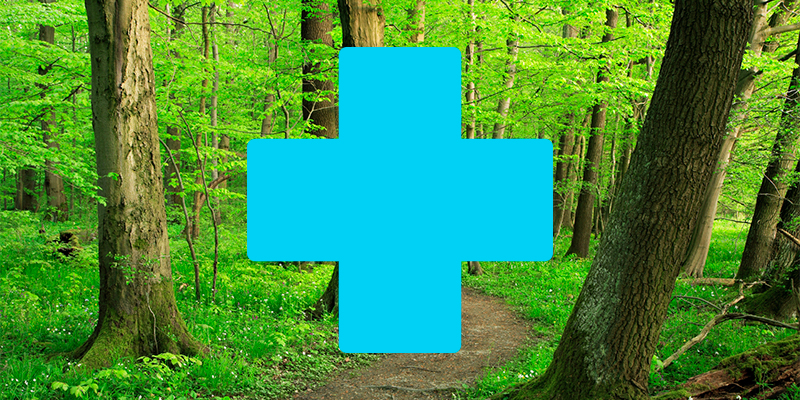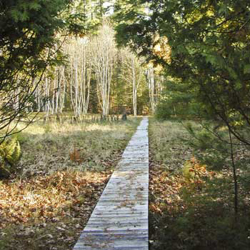Professional Practice
Adult: Well-Being

Feeling down? Go outside. A recent study found just 5 minutes of activity in natural areas resulted in improvements in self-esteem and mood. , 2010
In 1984, E.O. Wilson introduced and popularized the term Biophilia. He defined this idea as ※the connections that human beings subconsciously seek with the rest of life.§ Study after study has found that people have a very strong preference for natural settings over man-made environments and these preferences cross cultures. This suggests, along with Wilson*s biophilia hypothesis, that our preferences are an evolutionary response.
We universally prefer savannas, forests that have little underbrush, and landscapes with clean, rushing water. We respond strongly to the concepts of prospect and refuge in design 每 we like the ability to survey our surroundings and also small, comfortable spaces that make us feel safe.
We have strong preferences for the natural over the built, with the attractiveness of the man-made increased by the introduction of natural features.
We like flowers because our ancestral brains know that fruit and seeds come later. In short, we*re wired evolutionarily to prefer nature.
How Nature Helps
There is an intuitive link between nature and well-being. Office workers don*t poster their cubicles with pictures of gorgeous natural scenes for no reason. Parks and trees, gardens and campgrounds make us more at ease. In general, the more time we spend outside in nature, the better our mental health will be.
The result of multiple research studies out of the United Kingdom have shown that spending time outside has known and measurable benefits to our mental health and well-being. Spending even a few minutes outside in a park has both short and long term positive mental health benefits.
Research
Explore More Resources:
"," Environmental Science and Technology, 2014
"," Environmental Science and Technology, 2010
National Recreation and Park Association, Frances E. (Ming) Kuo, 2010
※,§
USDA Forest Service, 2009
※,§ Utrecht University, 2008
Psychological Science, 2012
Journal of Holistic Nursing, 2013
Environmental Science & Technology, 2012
※,§ Health and Place, 2010
※,§ Environmental Sciences and Technology, 2010※
※?§ Journal of Epidemiology & Community Health, 2008
, Kellert and Wilson, 1993
",§ Environment and Behavior, 1991
, Relf, 1990
, Wilson, 1984
 佪圖弝け 2010 Professional General Design Honor Award, Crosswaters Ecolodge, Nankun Mountain Reserve, Guangdong Province, China, EDSA, Inc. / Image credit: EDSA and Hitesh Mehta
佪圖弝け 2010 Professional General Design Honor Award, Crosswaters Ecolodge, Nankun Mountain Reserve, Guangdong Province, China, EDSA, Inc. / Image credit: EDSA and Hitesh MehtaResources
每 The Trust for Public Land
Sustainable Sites Initiative
"" The Dirt blog
"," The Dirt blog
"" Outside Magazine
University of Washington
Organizations
Role of the Landscape Architect
Landscape architects have long understood the need to integrate parks into cities, Frederick Law Olmsted*s Central Park being one of the most prime examples. Naturalist parks in the middle of cities provide city dwellers with some of the nature connections they*re missing in their urban lives.
Recognizing the desire of people to want to get away to even more remote destinations, landscape architects also design retreats that provide opportunities to immerse in the natural world, while keeping the environmental impact low.
Case Studies
, New York, New York, Frederick Law Olmsted
Theater Group Retreat, Western Maine, Landworks Studio
, Cleveland, Ohio, URS Corporation
, Bronx, New York, Mathews Nielsen Landscape Architects
<< Type II Diabetes
Home >>